Keynote Speakers
Stefano Maci
Self-complementary and Duality in Metasurfaces
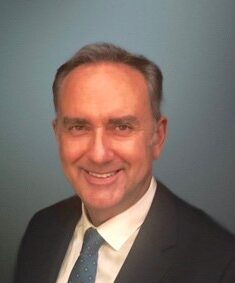
Metasurfaces (MTS) are thin layers of subwavelength elements which are employed to control the wavefront of guided waves and reflected waves and the transformation from surface wave (SW) to leaky waves (LWs). Particular cases of MTSs are self-complementary metasurfaces (SCMs), single-layer metal patterns floating in free-space whose elemental cell remains invariant after complementary inversion except for a rotation of the elemental cell in the metasurface plane, where “complementary inversion” means interchanging the metal pattern with the free space. The concept of SCM can be also extended to impenetrable type of boundary conditions, modifying the shape of the elements with the objective to maintain the basic properties of reflection/transmission and/or SW degeneration of modes. The application of SCMs to antennas opens new possibilities, especially for antennas in dual-polarization. In this talk, after illustrating the basic principle, various examples will be presented about the use of SCM in microwave frequency range which include gaussian horns, surface-wave based antennas, hyperbolic surfaces, flat reflectors, optical control of the reconfigurability, and propagation which is robust against backscattering.
Stefano MACI (F04) received the Laurea Degree cum Laude at University of Florence in ‘87 and from ‘97 is a Professor at the University of Siena. Since 2000, he was member the Technical Advisory Board of 13 international conferences and member of the Review Board of 6 International Journals. In 2004-2007 he was WP leader of the Antenna Center of Excellence (ACE, FP6-EU) and in 2007-2010 he was International Coordinator of a 24-institution consortium of a Marie Curie Action (FP6). In 2004 he was the founder of the European School of Antennas (ESoA), a post graduate school that presently comprises 34 courses on Antennas, Propagation, Electromagnetic Theory, and Computational Electromagnetics and 150 teachers coming from 15 countries. Since 2004 is the Director of ESoA. Since 2010 he has been Principal Investigator of 6 cooperative projects financed by European Space Agency.
Professor Maci has been a former member of the AdCom of IEEE Antennas and Propagation Society (AP-S), associate editor of AP-Transaction, Chair of the Award Committee of IEEE AP-S, and member of the Board of Directors of the European Association on Antennas and Propagation (EurAAP). From 2008 to 2015 he has been Director of the PhD program in Information Engineering and Mathematics of University of Siena, and from 2013 to 2015 he was member of the first National Italian Committee for Qualification to Professor. He has been former member of the Antennas and Propagation Executive Board of the Institution of Engineering and Technology (IET, UK). He founded and has been former Director of the consortium FORESEEN, involving 48 European Institutions. He was the principal investigator of the Future Emerging Technology project “Nanoarchitectronics” of the 8th EU Framework program, and he is presently principal investigator of the EU program “Metamask”. He was co-founder of 2 Spin-off Companies. He has been a Distinguished Lecturer of the IEEE Antennas and Propagation Society (AP-S), and EuRAAP distinguished lecturer in the ambassador program. He was recipient of the EurAAP Award in 2014, of the IEEE Schelkunoff Transaction Prize in 2016, of the Chen-To Tai Distinguished Educator award in 2016, and of the URSI Dellinger Gold Medal in 2020. He has been TPC Chair of the METAMATERIAL 2020 conference and Chairperson of EuCAP 2023. In the last ten years he has been invited 25 times as key-note speaker in international conferences. He is President of the IEEE Antennas and Propagation Society 2023.
The research interest of Prof Maci includes high-frequency and beam representation methods, computational electromagnetics, large phased arrays, planar antennas, reflector antennas and feeds, metamaterials and metasurfaces. His research activity is documented in 200 papers published in international journals, (among which 100 on IEEE journals), 10 book chapters, and about 450 papers in proceedings of international conferences. The papers he coauthored have been cited about 10,000 times (h index 50, source: Google Scholar).
Prof. Raafat Mansour
Microwave and Millimeter-Wave Phase Change Material (PCM) Devices for Future Communication Systems
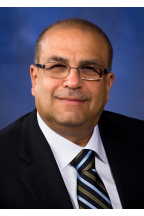
Microwave and Millimeter-wave switches are key components in communication systems. They are used for signal routing and for realizing a wide range of reconfigurable microwave and millimeter-wave devices. Phase Change Materials (PCM) have been widely used in optical storage media and non-volatile memory device applications. Over the past recent years, there have been interest in exploiting the PCM materials such as germanium telluride (GeTe) and metal insulator transition materials such as vanadium oxides (VO2) for RF applications. The principle of operation of PCM devices is based on the ability of the material to transform from a high-resistivity state (amorphous phase) to a low-resistivity state (crystalline phase) and vice versa with the application of short duration pulses. Several orders of magnitude in resistivity change can be achieved by PCM technology allowing the realization of highly miniature microwave and millimeter-wave switches. In addition to miniaturization, GeTe based switches offer latching functionality and ease of monolithic integration with other RF circuits. This talk will address recent developments in PCM switches and their applications to the realization of switch matrices, phase shifters, variable attenuators, reconfigurable filters and reflective intelligent surfaces.
Raafat Mansour is a Professor of Electrical and Computer Engineering at the University of Waterloo and holds Tier 1 – Canada Research Chair (CRC) in Micro-Nano Integrated RF Systems. He held an NSERC Industrial Research Chair (IRC) for two terms (2001-2005) and (2006-2010). Prior to joining the University of Waterloo in January 2000, Dr. Mansour was with COM DEV Cambridge, Ontario, over the period 1986-1999, where he held various technical and management positions in COM DEV’s Corporate R&D Department. Professor Mansour holds 43 US and Canadian patents and more than 420 refereed IEEE publications to his credit. He is a co-author of a 23-chapter Book published by Wiley and has contributed 7 chapters to five other books. Professor Mansour founded the Centre for Integrated RF Engineering (CIRFE) at the University of Waterloo https://uwaterloo.ca/centre-integrated-rfengineering/. It houses a clean room and a state-of-the-art RF test and characterization laboratory. He was as the Technical Program Chair of the 2012 IEEE International Microwave Symposium (IMS). Professor Mansour is a Fellow of the IEEE, a Fellow of the Canadian Academy of Engineering (CAE), a Fellow of the Engineering Institute of Canada (EIC). He was the recipient of the 2014 Professional Engineers Ontario (PEO) Engineering Medal for Research and Development and the 2019 IEEE Canada A.G.L. McNaughton Gold Medal Award
Dr. Qammer H. Abbasi
A next wave of Wireless Communication is Here: How 6G will Evolve?
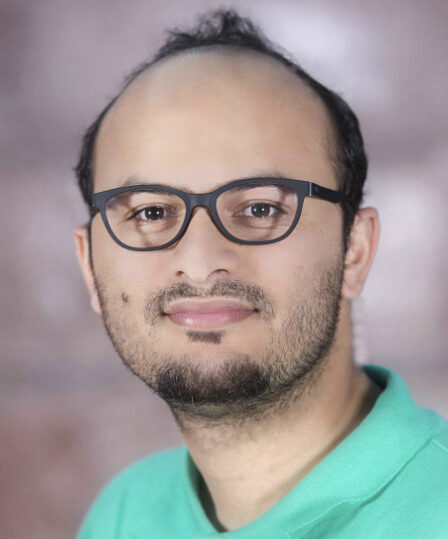
Future wireless networks are expected be more than allowing people, mobile devices, and objects to communicate with each other. The sixth generation (6G) of mobile networks are envisioned to include high data rate applications and ultra-massive, connected things. This also includes bio and nano-internet of things (IoT) tele-operated driving, unmanned mobility, haptic communications, unmanned aerial vehicles, and many more. Given the size of nano sensors, THz frequency is proposed to do various sensing activities at this scale. However, it will be ideal to use the same radio frequency for communications as well. Furthermore, THz is also proposed as an enabler of extremely high data rate applications in 6Gcommunications. The talk will be focused on Terahertz antenna design and new technology, which is referred to as Reconfigurable Intelligent Surfaces (RISs) which will be enabler for future 6G communication.
Qammer H. Abbasi (SMIEEE, MIET, FRET, FRSA), Dr Abbasi is a Reader with the James Watt School of Engineering, University of Glasgow, U.K., deputy head for Communication Sensing and Imaging group (110+ researchers), Program Director for Dual PhD Degree, deputy theme lead for Quantum &Nanotechnology in the University’s Advance Research Centre, Co-Manager for RF and terahertz laboratory and lead for healthcare and Internet of things use cases with Scotland 5G Center Urban testbed. He has grant portfolio of £6M+ and contributed to more than450+ leading international technical journal and peer reviewed conference papers and 10 books and received several recognitions for his research including URSI 2019 Young Scientist Awards, UK exceptional talent endorsement by Royal Academy of Engineering, Sensor 2021 Young Scientist Award , National talent pool award by Pakistan, International Young Scientist Award by NSFC China, National interest waiver by USA, University Research Excellence Award from TAMUQ in two consecutive years, Reward for Excellence from University of Glasgow, Research Culture award University of Glasgow, 8 best paper awards, Pakistan Award (for services to Antenna and RF community in Pakistan), Best chapter award2021 as chair from IEEE APS and IEEE MTT both, most downloaded paper in IEEE Terahertz Transaction, cover of MDPI journal twice, Editor’s choice paper from MDPI Sensor 2021, and best representative image of an outcome by QNRF. In addition, his work received media coverage by Analog IC tips, Microwaves & RF newsletters, Vertical news, Pakistan Dawn news, BBC news, Scotland TV, Fierce wireless, City42, Dunya news, Chinese news and many other media houses. Dr.Abbasi is an IEEE senior member and is chair of IEEE AP/MTT Scotland joint chapter and was chair of IEEE young professional affinity group. He is an Associate editor for IEEE Journal of Electromagnetics, RF, and Microwaves in Medicine and Biology, IEEE Sensors, IEEE Internet of Things, IEEE open access Antenna and Propagation, senior editor for Frontiers IoT and Sensors Networks section and acted as a guest editor for numerous special issues in top notch journals. He is a committee member for IEEEAPS Young professional, Sub-committee chair for IEEE YP Ambassador program, IEEE 1906.1.1standard on nano communication, IEEE APS/SC WG P145, IET Antenna & Propagation and healthcare network. Dr. Abbasi has been a member of the technical program committees of several IEEE flagship conferences and technical reviewer for several IEEE and topnotch journals and acted as TPC chair and executive chair for 4th, 5th and 6th international UCET conference 2019, 2020, 2021 in addition to EAI Bodynets 2021 General Chair. Dr. Abbasi is expert reviewer for UK National Commission for UNESCO’s, EPSRC and MRC UK (panel member, 2020), Qatar national research funds, Flemish funding council (FWO, panel member), Belgium, OSF Poland, British council, UAE and KSA funds. He serves regularly as organizer of conferences, special sessions, workshops and TPC member for several IEEE flagship conferences, in addition to reviewer for Wiley & Sons books, Springer, IET books, IEEE conferences and more than 30 leading journals including Nature. He is Fellow of Royal Society of Arts and Industrial fellow for Royal Academy of Engineering.
Prof. Abbas Omar
Health Aspects of Millimeter-Wave Radiation in 5G and Beyond
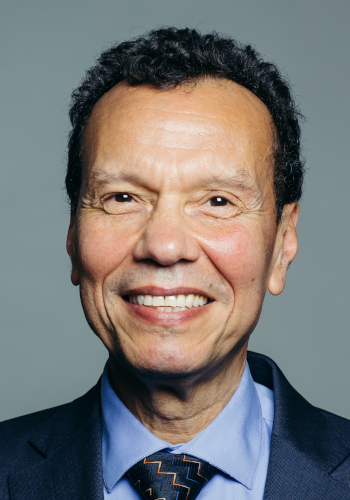
The physical concepts underlying the wave-matter interaction, particularly at millimeter-wave frequencies, are reviewed and discussed in this talk. Health hazard associated with electromagnetic wave exposures are then discussed. These can generally be categorized in ionizing and non-ionizing effects. Health impact of millimeter-wave exposures belong to the latter, and therefore can be either the direct increase in the body temperature or the indirect overloading of the biological processes responsible for the body thermal regulation. At wavelengths that are much larger than the atomic/molecular scale, a continuous spatial distribution of the electromagnetic wave is an adequate mathematical representation. The wave power-density is described by the Poynting vector, and the power transfer from the wave to the biological substances can be calculated with high precision using the concept of constitutive parameters (conductivity, permittivity, and permeability). These are macroscopic spectral quantities (moving spatial averages), which cannot account for special treatment of specific molecular-scale structures similar to that of, e.g., DNA strand. Millimeter Waves and even Tera-Hertz Waves belong to this category. In addition, the Millimeter Waves suffer from very strong attenuation inside the human body, so that they cannot penetrate deeper than few millimeters.
Dr. Omar is Professor emeritus at the Otto-von-Guericke University of Magdeburg in Germany. He received the B.Sc., M.Sc. and Doktor-Ing. degrees in electrical engineering in 1978, 1982 and 1986, respectively. He has been professor of electrical engineering since 1990 and director of the Chair of Microwave and Communication Engineering at the Otto-von-Guericke University of Magdeburg, Ger-many from 1998 to his retirement in 2020. He joined the Petroleum Institute in Abu Dhabi as a Distinguished Professor in 2012 and 2013 as an organizer of the research activities for the Oil and Gas Industry in this area. In 2014 and 2015 he chaired the Electrical and Computer Engineering at the University of Akron, Ohio, USA. Dr. Omar authored and co-authored more than 480 technical papers extending over a wide spectrum of research areas. His current research and teaching fields cover the areas of health aspects of millimeter-wave radiations, quantum computing, phased arrays and beamforming for massive MIMO, and magnetic-resonance imaging. He also covered in the past other disciplines including microwave and acoustic imaging, microwave and millimeter-wave material characterization, indoor positioning, subsurface tomography and ground penetrating radar, and field theoretical modeling of microwave systems and components. Dr. Omar is IEEE Fellow.
Hatem Abdelkader
Disaggregated Open Optical Transport Networks
Deployed optical transport networks are predominantly closed, turn-key solutions that behave as a single-vendor managed domain. In these rigid one-size-fits-all solutions, the optical transport system components are tightly integrated to optimize the system performance and simplify operations. Despite the optimization and simplification advantages, a trend to disaggregate optical networks has steadily emerged. Network operators are increasingly interested in minimizing vendor lock-in, accelerating innovation, and selecting best-of-breed network devices that best support their specific needs. Disaggregation involves assembling open, multi-vendor network elements (such as Reconfigurable Optical Add-Drop Multiplexers- ROADMs, transponders, inline amplifiers, etc.) into optical networks that are based on Software Defined Network (SDN) principles and open standard Application Programming Interfaces (APIs).
In this presentation, we review optical network disaggregation drivers, models, challenges, requirements, and describe a reference architecture for control and management of open optical networks implementing a partial disaggregation model. We also highlight optical network disaggregation key enabling technologies by the industry, and a recently published lab trial as a proof-of-concept demonstration
Prof. Atif Shamim
Microwave Water Cut Sensors for Oil Industry: From Design to Deployment in the Field
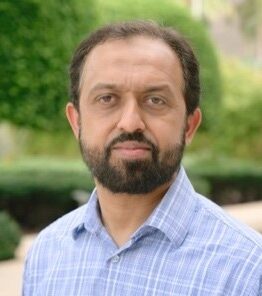
Modern reservoir management in oil and gas industry relies on accurate water fraction measurement which is produced as a by-product with oil. The water-cut sensors available at the moment are either costly, heavy, intrusive, incapable of covering full water-cut range and/or require mixer as a flow conditioner. In this talk, we present inline, pipe conformable microwave resonator-based sensors which are capable of detecting full range (0-100%) water cut. First, a basic microwave resonator-based water cut sensor will be presented which is implemented in a curved fashion on a pipe surface. To realize the sensor on the pipe, a concept of dual ground plane will be introduced. Later in this talk, an advanced design will be presented which can operate consistently on horizontal or vertical pipe sections, negating the effect of either orientation of the pipe or oil-water mixture flow regime on sensor’s performance. A compact downhole version of the sensor is also presented. This talk will also describe realization of these sensors through screen printing, and their characterization in an industrial flow loop test setup that emulates oil field conditions. Finally, all the steps required to transform a lab prototype (TRL 2-3) into a field deployable product (TRL7-8) will be explained. Field test results and challenges of measuring the water fraction in presence of gas will conclude this talk.
Atif Shamim – received his MS and PhD degrees in electrical engineering from Carleton University, Canada in 2004 and 2009 respectively. He was an NSERC Alexander Graham Bell Graduate scholar at Carleton University from 2007 till 2009 and an NSERC postdoctoral Fellow in 2009-2010 at Royal Military College Canada and KAUST. In August 2010, he joined the Electrical and Computer Engineering Program at KAUST, where he is currently an Associate Professor and principal investigator of IMPACT Lab. He was an invited researcher at the VTT Micro-Modules Research Center (Oulu, Finland) in 2006. His research work has won best paper awards in IEEE ICMAC 2021, IEEE IMS 2016, IEEE MECAP 2016, IEEE EuWiT 2008, first prize in IEEE IMS 2019 3MT competition and IEEE AP-S Design Competition 2022, finalist/honorable mention prizes in IEEE AP-S Design Competition 2020, IEEE IMS 2017 (3MT competition), IEEE IMS 2014, IEEE APS 2005. He has been selected as the Distinguished Lecturer for IEEE AP-S (2022-2024). He has won the Kings Prize for the best innovation of the year (2018) for his work on sensors for the oil industry. He was given the Ottawa Centre of Research Innovation (OCRI) Researcher of the Year Award in 2008 in Canada. His work on Wireless Dosimeter won the ITAC SMC Award at Canadian Microelectronics Corporation TEXPO in 2007. Prof. Shamim also won numerous business-related awards, including 1st prize in Canada’s national business plan competition and was awarded OCRI Entrepreneur of the year award in 2010. He is an author/co-author of around 300 international publications, an inventor on more than 40 patents and has given close to 100 invited talks at various international forums. His research interests are in innovative antenna designs and their integration strategies with circuits and sensors for flexible and wearable wireless sensing systems through a combination of CMOS and additive manufacturing technologies. He is a Senior Member of IEEE, founded the first IEEE AP/MTT chapter in Saudi Arabia (2013) and served on the editorial board of IEEE Transactions on Antennas and Propagation (2013-2019), and as a Guest Editor for IEEE AWPL Special issue (2019), and is currently serving as an Associate Editor for IEEE Journal of Electromagnetics, RF and Microwaves in Medicine and Biology. He serves on numerous IEEE committees such IEEE Technical committees on Antenna Measurements (AP-S), Microwave Controls (MTT-S 13), and Additive Manufacturing (CRFID).
Find out more details at (https://cemse.kaust.edu.sa/impact)
